Exploring a Rare Piece of History with By Stealth and Sea
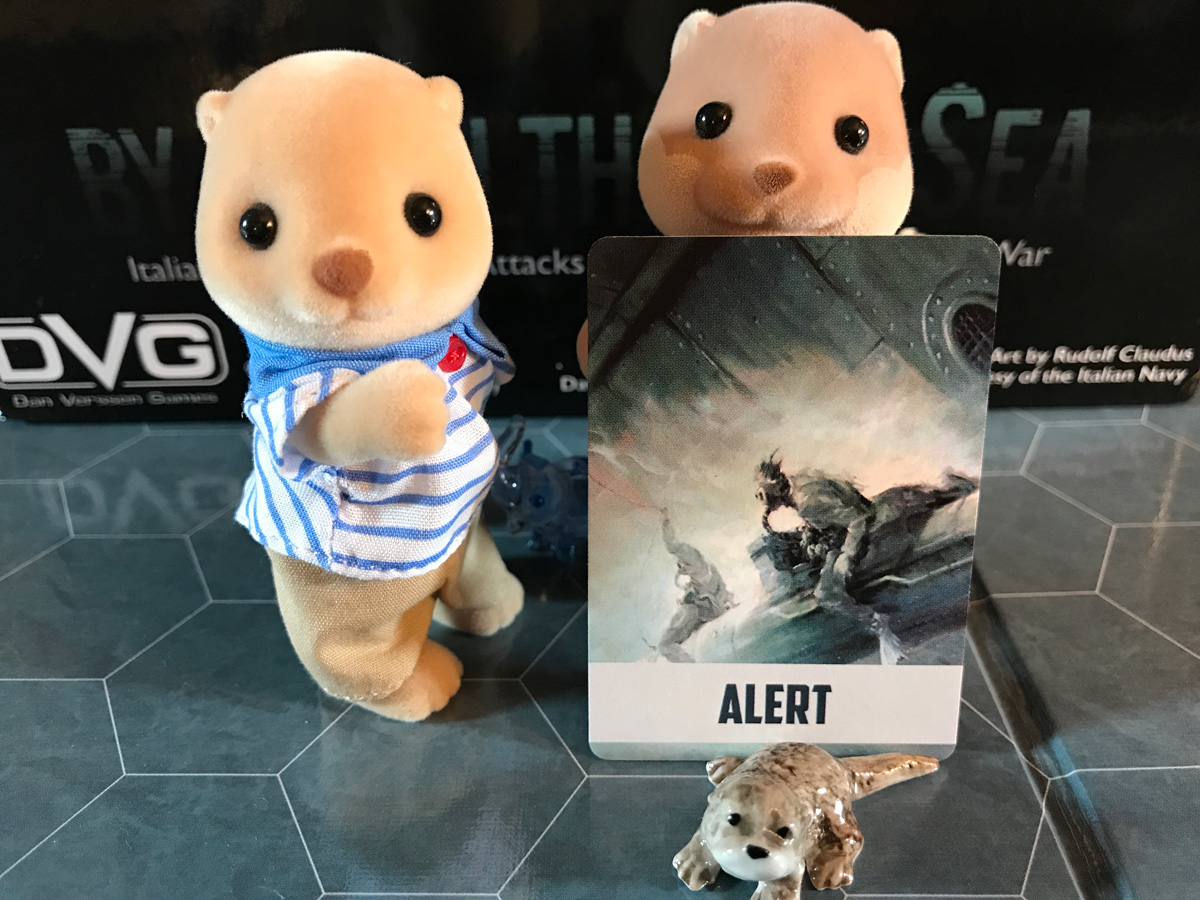
Pilot manual torpedoes during an interesting part of history where anything might go wrong in By Stealth and Sea.
Based on my positive experiences with Castle Itter and Pavlov’s House, I branched out a little bit with another historical wargame. By Stealth and Sea is all about the early technological innovations with manual torpedoes. All sorts of faults hampered progress, and harbor defenses made it extra dangerous. Time to explore these SLCs and act all stealthy!
Game Overview
Game Name: By Stealth and Sea
Publication Year: 2020
Designers: Nicola Saggini and David Thompson
Artist: David Thompson
Publisher: Dan Verssen Games (DVG)
Solo Mode: Included in the Base Game
Mounted maps, ahoy! Over the course of various scenarios, historical situations may be played out with a trio of SLCs. Faults might damage parts or give each crew challenges, all while searchlights and patrols defend the harbor. Success is unlikely… Yet far from impossible!
First Play
January 5, 2022
Complexity
2
Latest Play
January 6, 2022
Expansions
0
Setup Time
5 Minutes
Lifetime Plays
2
Play Time
45 Minutes
High Score
22
Game Area
28" x 24"
Low Score
17
Managing Each SLC
A total of 3 SLCs, or manual torpedoes, form the basis of each scenario. Different crews provide different abilities and some are more skilled in certain areas, like repair.
Simple tokens help mark the intact elements. As faults damage components and repair checks fail, these tokens reveal problems. For instance, not being able to submerge.
Lots of problems! However, this is a very thematic way to simulate how early technology was rather unreliable.
Scenarios can also change these elements very easily with upgraded skills to provide more dice during checks.
Clearly Defined Steps
The rulebook was a little lengthier than I expected, but it provided lots of examples. I still had to check certain situations here and there, but it was generally clear.
Even better were the included reference sheets! One provided an outline of every round, with an easy way to locate each section’s description in the rulebook.
All of the available actions were also laid out neatly. These reference sheets were invaluable and so appreciated!
I knew I would need to look through each step as I played, yet I was excited to see how everything came together.
Otterly on Alert
My Calico Critters simply had to stop by to investigate this new game on the table! I had a makeshift SLC team of otters who wanted to be very careful with the alert cards.
Once all SLCs take their actions, which range from moving to attaching warheads, all of the harbor defenses trigger.
Searchlights scan the waters and patrols might show up, all while trying to detect the SLCs. Alert cards provide values, and each step can trigger with a set minimum.
Lots of tension, indeed! We even enlisted a very tiny otter to provide additional assistance in the open water!
Accurate Artwork
The history behind the game was fascinating, and the box artwork provided a glimpse into these very dangerous sorts of missions. This was it: All manually activated!
Breathing gear was also important, since it wasn’t just the mechanical aspects that might suffer a fault. The crew was in constant danger aboard all of the SLCs.
Fun side note: It might only be my copy, but there is a distinct white dash directly in the center. Stealthy!
Although the history and tension seemed excellent, I had some concerns about how interesting gameplay would be.
Detected by a Patrol
Initial movement was mostly full steam ahead as the surfaced SLCs made their way closer to the harbor. Time was short, after all, and a lot could go wrong quickly.
It did. Ha! Way out in the open, a patrol craft was lucky enough to show up at the exact right moment.
When detected, a yellow token is used to mark that SLC. No damage, yet the patrol was right there and so close!
Maneuvering is another element that can take up precious time and actions. As would be expected, these SLCs weren’t the most agile aquatic contraptions.
The Great Unknown
Perhaps the sea was unforgiving, but the dice rolls were entirely against me. A standard d6 ended up at 1-3 at least 75% of the time… I roughly kept track. Goodness!
I still enjoted that sense of not knowing what might happen with the alert cards, though. They were harder to predict, yet offered a sense of intrigue with each flip.
My tiny otter friend scoped out the area, too, adding nothing but a little dose of cuteness to the mechanics!
The SLCs slowly moved closer to the harbor, submerging as they closed in to sacrifice speed for stealthiness.
A Makeshift Decoy
The detected status struck several times, yet a little movement helped throw the patrols off. Mostly.
SLC 1 was on its own, far from any patrols and in a good position to move into the harbor. So the crew did! They were within range of their targets and submerged.
SLC 2 was in terrible shape with patrols everywhere and poised to attack. Yet it was beneficial for SLC 3, whose ballast tank suffered a malfunction and it surfaced.
That’s right… Just outside the harbor, it rose up in a terrible spot! But the patrols didn’t notice it, thankfully.
Escaping the Harbor
Destroying ships in the harbor consisted of moving the red warhead token and removing a token. No spectacular explosions to showcase here! Yet it wasn’t over.
Not only were targets to be destroyed, but each SLC crew needed to escape. Scuttling the SLCs was easy… So many faults and no need to salvage anything material.
To escape via the harbor was nearly impossible, yet traveling to open water took precious time. Decisions!
Fortunately, I watched some of the crew successfully escape after completing their mission. Victory!
Considerations for What Wargames Offer
Without this game, I never would have learned about these human torpedo attacks. It was fascinating to consider the strategic advantages, and the great risks and losses associated with using untested technology. So many faults to contend with! Or maybe my dice rolls were just really unkind… A 4 or 5 was rare, while I may have rolled 6 twice. Yikes!
As I played, though, I came to the surprising revelation that this game itself was a rarity in my collection. Ignoring fantasy or other fictional titles, my realistic wargames typically involve defense and survival. In this instance, the SLCs were on a stealth mission, yet the goal was definitely more offense than defense. An interesting observation!
I suppose the SLC management with all the faults and constant need for repairs acted a little defensively, although that was only secondary to the mission of destroying ships. The rest of the scenarios took place across various maps with different levels of technology and harbor defenses, but it didn’t feel like I was reliving history in a meaningful way.
Granted, this is an excellent game to play through in a fairly short amount of time! For me, though, the story didn’t come through with the mechanics. Move around, maneuver, hope luck was on my side, and take out a few higher value ship tokens. There were some decisions, of course, but not enough to make me think this was the right game for me.
Session Overview
Play Number: 1 and 2
Solo Mode: Included in the Base Game
Play Details: Scenario 1
Outcome: 17 Points and 22 Points (1 Win and 1 Loss)
The first scenario served as an introduction, so I played it again to see if I might want to continue on with the campaign. I lost Tesei and Pedretti to patrol attacks, while warhead faults plagued everyone. It was still a great success, though! I enjoyed the historical context and challenge of using faulty, early technology, yet the mechanics felt rather repetitive without much of a story.
%
1 Play
Affordability
Price & Value
5
Functionality
Challenges & Mechanics
7
Originality
Design & Theme
5
Quality
Components & Rules
9
Reusability
Achievement & Enjoyment
5
Variability
Distinctness & Randomness
4
+ Pros (Positives)
- The sequence of play is fairly intuitive after a single play, while reference sheets provide helpful information.
- Alert cards provide a sense of tension during every harbor defense phase as SLCs risk being detected.
- Decisions may be generally limited, yet there are interesting moments when a detected SLC might be useful.
- With a quick set of steps, play time goes by pretty quickly and provides some interesting moments near the end.
- Early technology is simulated very well with the different fault decks for each scenario, adding complications.
- Guided scenarios allow for a historical or custom campaign with many crew members and 3 mounted maps.
– Cons (Negatives)
- The tokens are very small with tiny print that’s hard to see, and these must be carefully sorted for every scenario.
- Dice rolls are difficult to succeed on, which is thematic, yet makes every check feel rather doomed from the start.
- Not many unique stories come through over time, owing to a very mechanical experience with gameplay.
- Scenarios are rather similar in terms of what might happen with limited variability and unique decisions.
Victory Conditions
Complete the Scenario
- Overall Goal Progress 100%
Goals and Milestones
Complete Scenario 1.
Score at least 20 points.
Continue the Conversation
What are your thoughts about By Stealth and Sea? Are there other wargames you enjoy that focus on little-known parts of history? I’m glad I tried this one out, even if it didn’t turn out to be for me. There were some interesting moments as the SLCs worked together, and even some spectacular successes in the harbor! Definitely great for the right player!
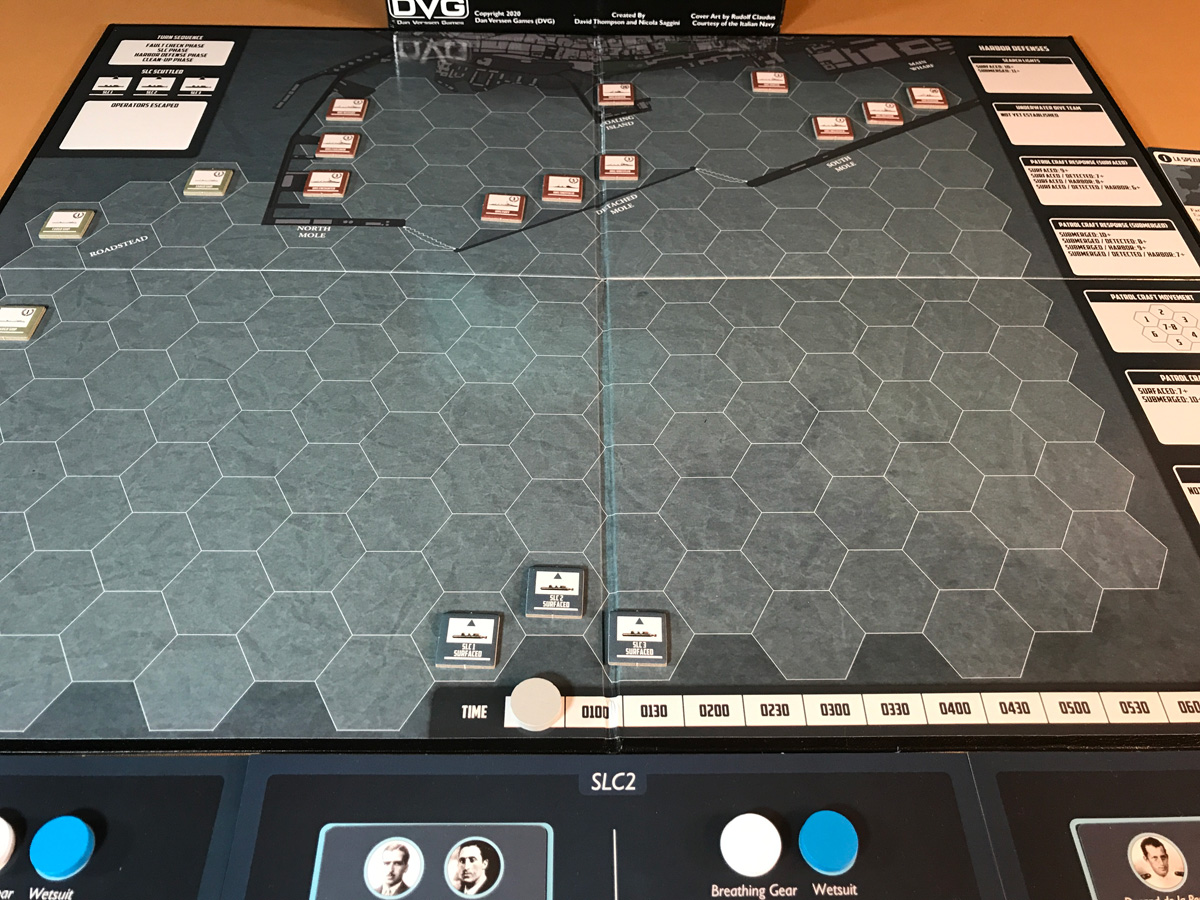
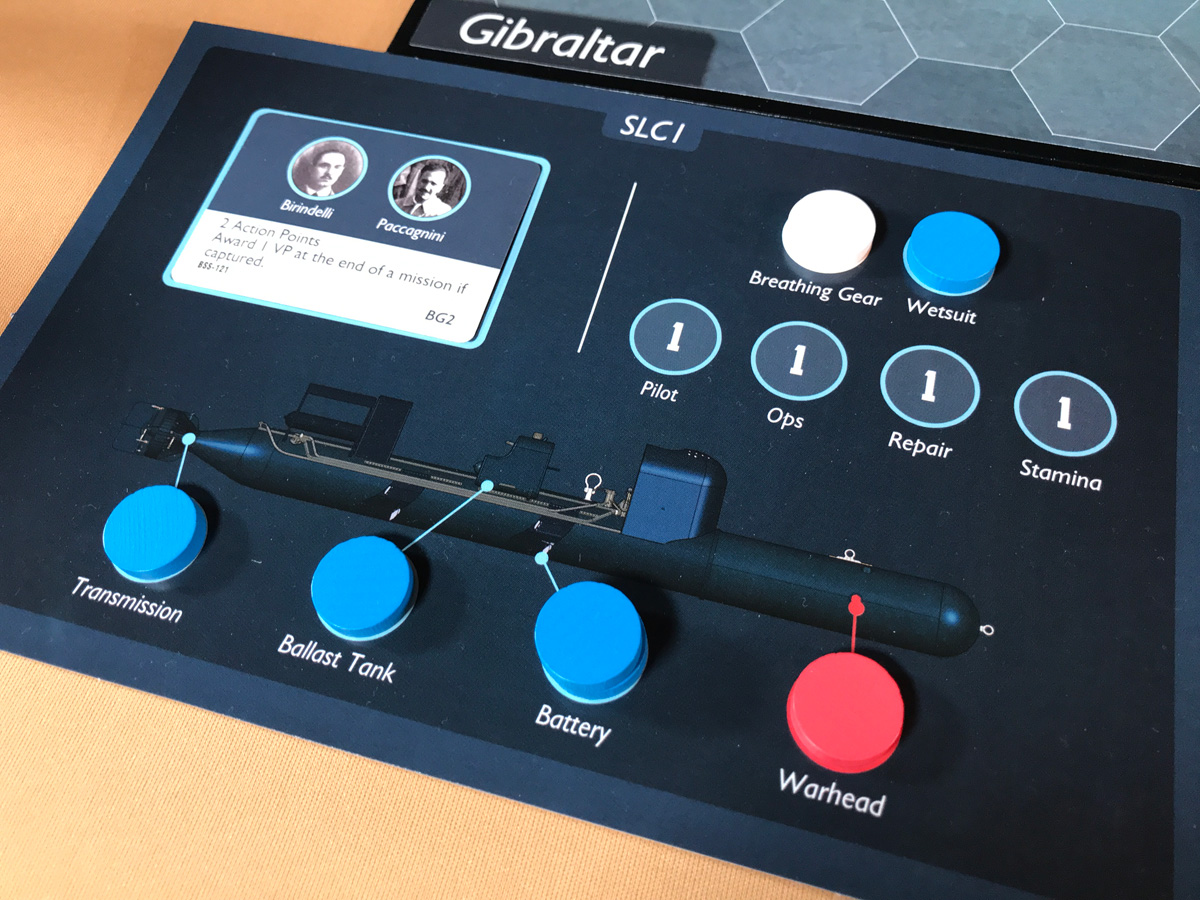
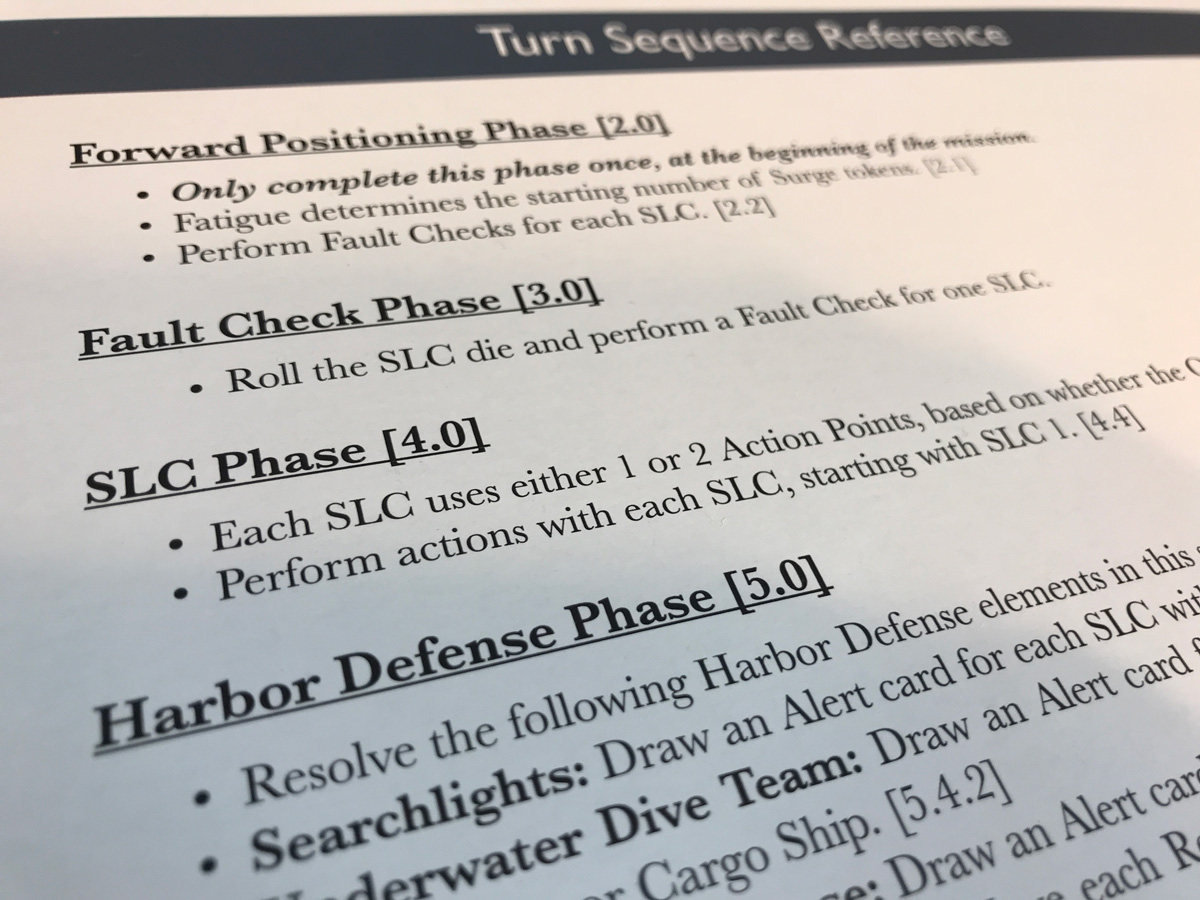
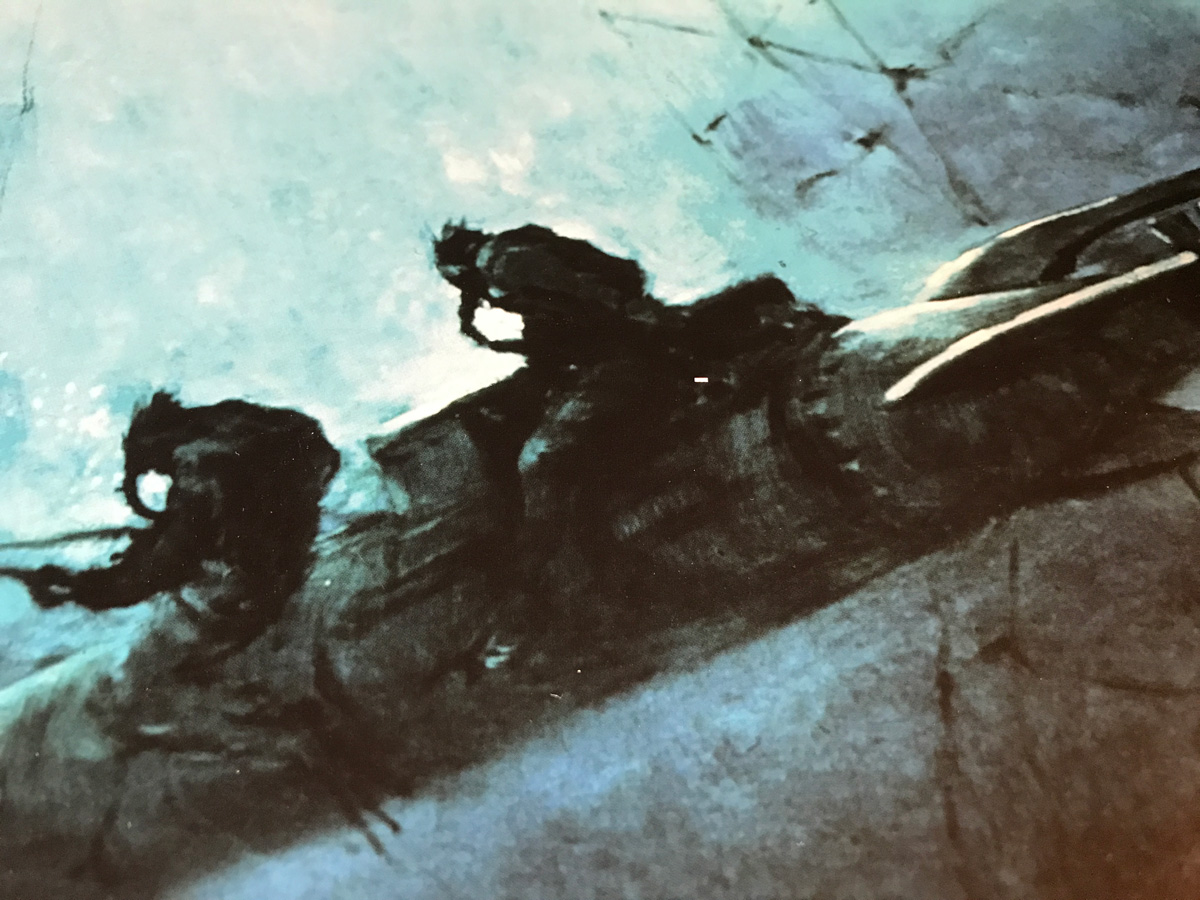
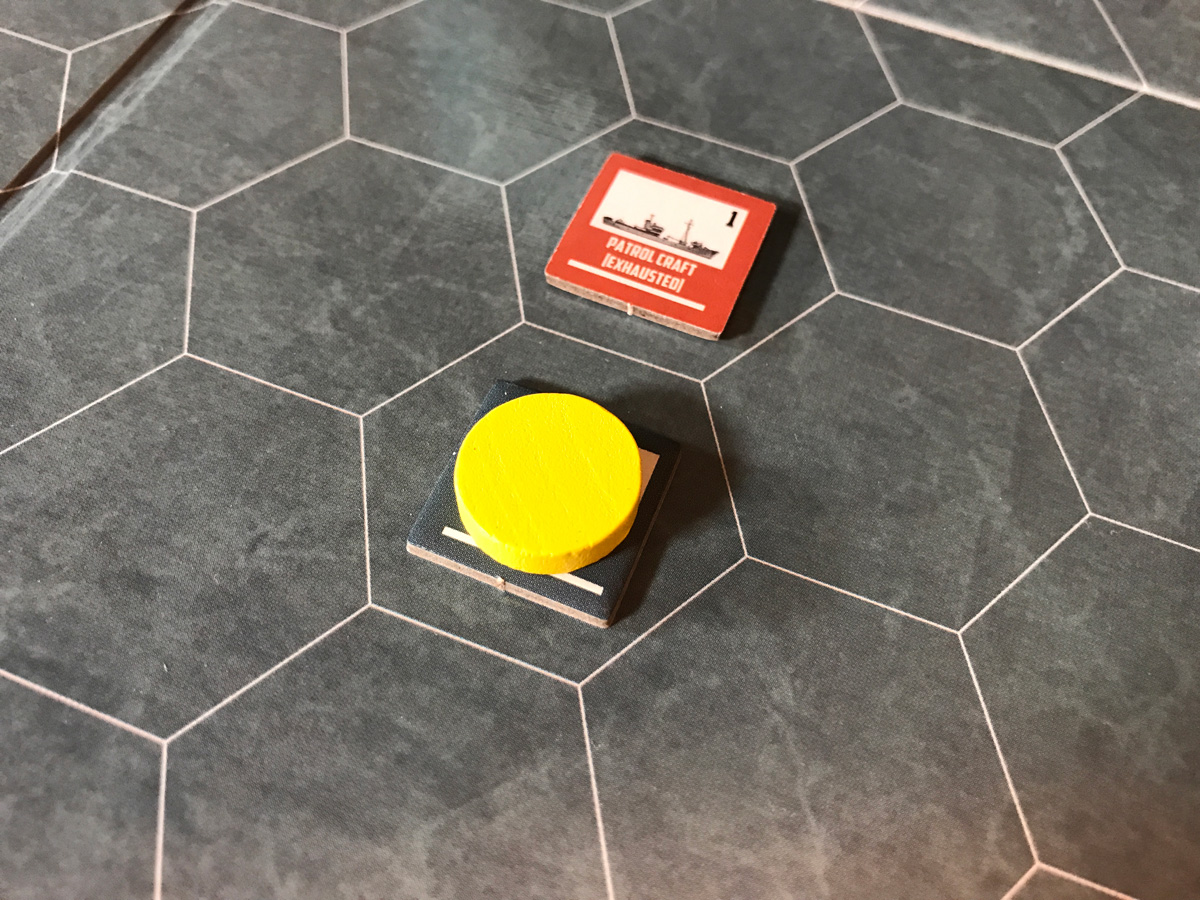

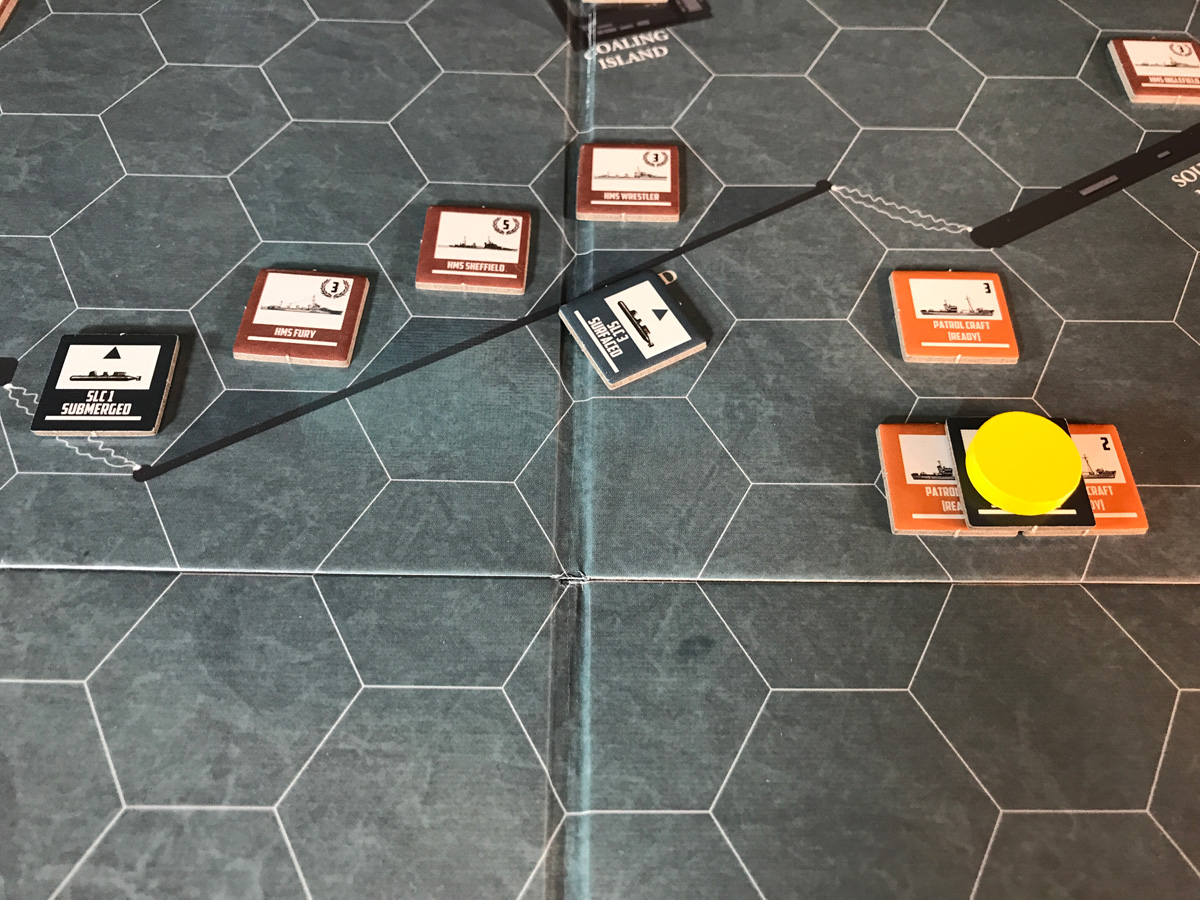
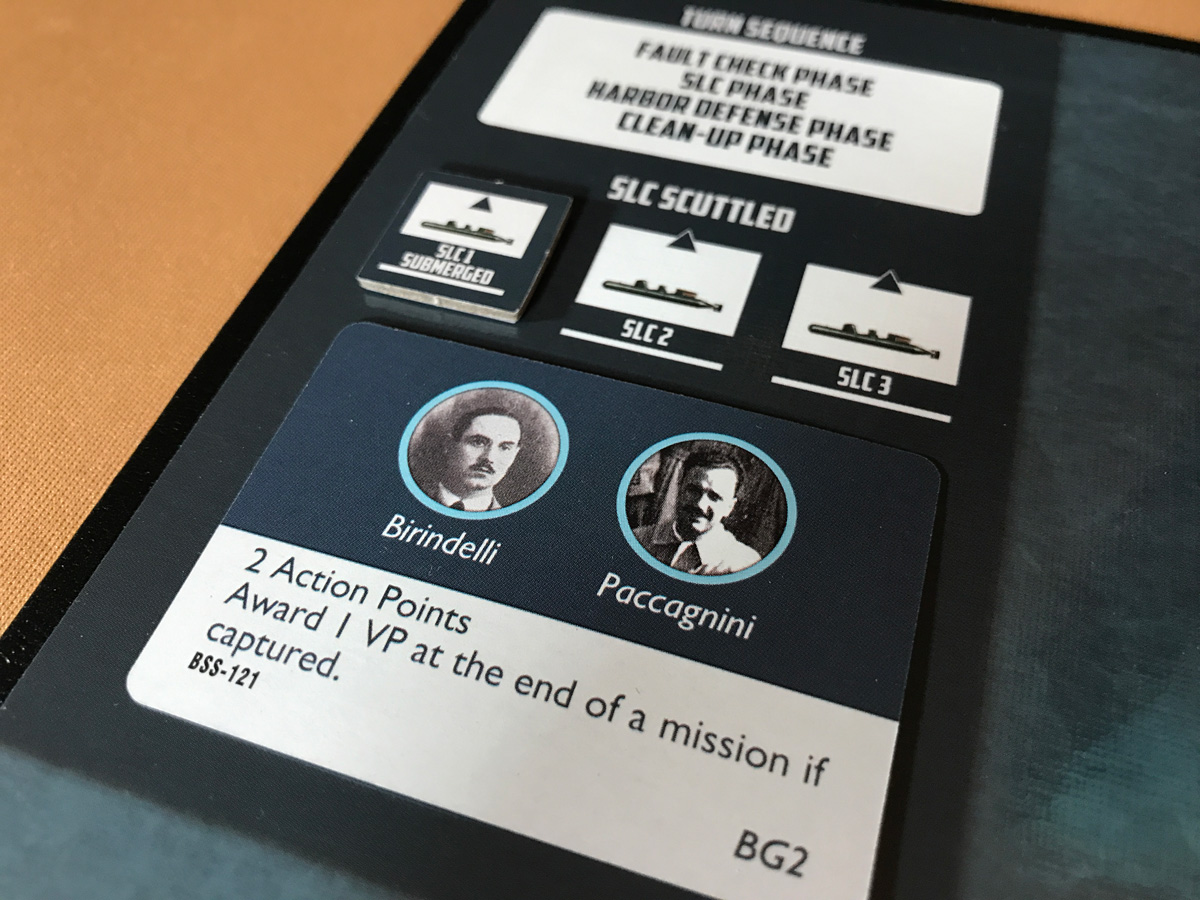
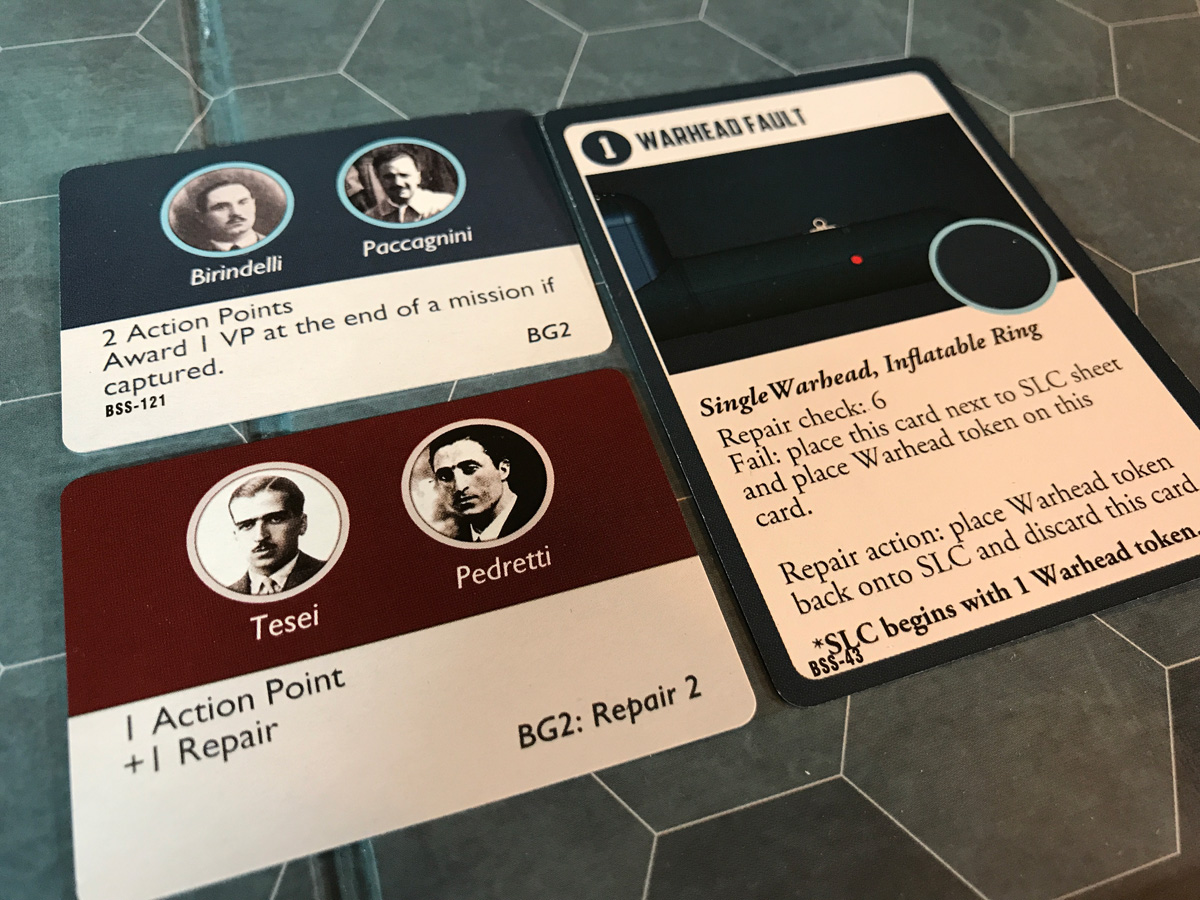
Ah, those tiny-print counters that tell you this is a Serious Wargame…
I agree with your comment; particularly in a game like this (or the Leader series, where I’ve played Hornet and Thunderbolt/Apache) where you’ve got a bunch of steps that need to be resolved in the exact right order, a list of exactly what to do when is very helpful in finding the rhythm of the game (and then one can go off and dig into the rules for the details).
I find it very frustrating when I know I did everything right but the dice make it go wrong. Realistic, of course, but not so much if I’m trying to achieve a win percentage or other campaign-type goal. (On the other hand, I own all of D-Day Dice second edition.)
Definitely gives off a serious vibe with those tokens! Establishing a cadence is something I was actually just thinking about today, and how some games help establish that sooner. It helps a lot when learning a game, but also when playing in general if it all flows well.
My preference for dice always changes. These ones just felt particularly rude with the way they refused to roll! I still prefer ways where I’m not guaranteed success, yet it’s nice to feel like I have some degree of control over the outcome.
Hey Jessica.
For the randomness, I have to agree to a certain level, but push you luck actions become a lot more reliable once your operator’s skills have increased. Until then, rolling for actions with one die should only be practiced in desperate situations.
For the tokens I also have to agree, but not so much on the writing on it as it is only important for historic correct setups (which I don’t use). My problem comes more from the size of game board spaces and the wooden counters that block the view on you SLCs. So spaces with 1 SLC, 2 Patrol Craft, a Navy Vessel and a detection token can be kind of crowded.
For the limited replay ability I’am using my own variants and mods. I know most people can only enjoy a game if it is perfect right of the box, but for me games like BSAS are a wonderful sandbox to expand with my own ideas.
If you want to make the most out of you BSAS experience: Organize the counters by VP value and skip the historic correct setup. Play the custom campaign, not just single missions. Play the first scenarios very passive. Bail your crews out if things get messy. Focus on skill increasing and survival of the crew.
And last but not least: Have a look at my La Spezia game board on BGG. It serves as a beginner and intermezzo scenario for the custom campaign.
I hope you will give the game another go, even if your initial experience was not the best.
Simon
Thanks you for the recommendations, Simon! It definitely sounds like the campaign is the better route to go in order to experience more of what the game has to offer. I’ve been playing lots of campaign-style games, or at least games that require around 10+ plays, and I may have rushed past this one.
Appreciate the tip on the La Spezia board I spotted it while learning the game, and now have something else to try out. Thank you for creating and sharing it, and here’s to hoping I’ll be back someday to give the campaign a try!